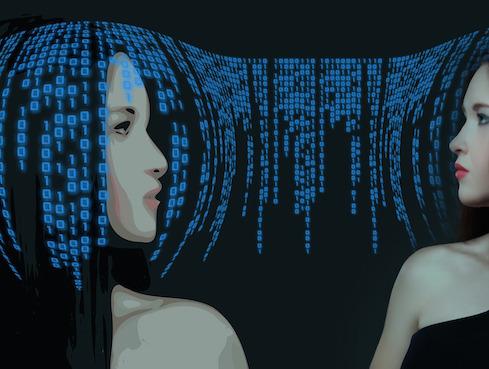Are you ready for AI and machine learning? Here's an overview of three use cases to give you a flavor of just what is possible.

AI is all around us, quietly working in the background or interacting with us via a number of different devices. Various industries are using AI for specific reasons such as ensuring that flights arrive on time or irrigating fields better and more economically.
Over time, our interactions with AI are becoming more sophisticated. In fact, in the not-too-distant future we'll have personal digital assistants that know more about us than we know about ourselves.
For now, there are countless AI projects popping up in commercial, industrial and academic settings. Following are a few examples of projects with an extra cool factor.
Get Credit. Now.
Who among us hasn't sat in a car dealership, waiting for the finance person to run a credit check and provide us with financing options? We've also stood in lines at stores, filling out credit applications, much to the dismay of those standing behind us in line. Experian DataLabs is working to change all that.
Experian created Experian DataLabs to experiment with the help of clients and partners. Located in San Diego, London, and Sao Paulo, Experian DataLabs employ scientists and software engineers, 70% of whom are Ph.Ds. Most of these professionals have backgrounds in machine learning.
"We're going into the mobile market where we're pulling together data, mobile, and some analytics work," said Eric Haller, EVP of Experian’s Global DataLabs. "It's cutting-edge machine learning which will allow for instant credit on your phone instead of applying for credit at the cash register."
That goes for getting credit at car dealerships, too. Simply text a code to the car manufacturer and get the credit you need using your smartphone. Experian DataLabs is also combining the idea with Google Home, so you can shop for a car, and when you find one you like, you can ask Google Home for instant credit.
There's no commercial product available yet, but a pilot will begin this summer.
AI About AI
Vicarious is attempting achieve human-level intelligence in vision, language, and motor control. It is taking advantage of neuroscience to reduce the amount of input machine learning requires to achieve a desired result. At the moment, Vicarious is focusing on mainstream deep learning and computer vision.
It's concept is compelling to many investors. So far, the company has received $70 million from corporations, venture capitalists and affluent private investors including Ashton Kutcher, Jeff Bezos, and Elon Musk.
On its website, Vicarious wisely points out the downsides of model optimization ad infinitum that results in only incremental improvements. So, instead of trying to beat a state-of-the-art algorithm, Vicarious is to trying to identify and characterize the source of errors.
Draft Better Basketball Players
The Toronto Raptors is working with IBM Watson to identify what skills the team needs and which prospective players can best fill the gap. It is also pre-screening each potential recruits' personality traits and character.
During the recruiting process, Watson helps select the best players and it also suggests ideal trade scenarios. While prospecting, scouts enter data into a platform to record their observations. The information is later used by Watson to evaluate players.
And, a Lesson in All of This
Vicarious is using unsupervised machine learning. The Toronto Raptors are using supervised learning, but perhaps not exclusively. If you don't know the difference between the two yet, it's important to know. Unsupervised learning looks for patterns. Supervised learning is presented with classifications such as these are the characteristics of "good" traits and these are the characteristics of "bad" traits.
Supervised and unsupervised learning are not mutually exclusive since unsupervised learning needs to start somewhere. However, supervised learning is more comfortable to humans with egos and biases because we are used to giving machines a set of rules (programming). It takes a strong ego, curiosity or both to accept that some of the most intriguing findings can come from unsupervised learning because it is not constrained by human biases. For example, we may define the world in terms of red, yellow and blue. Unsupervised learning could point out crimson, vermillion, banana, canary, cobalt, lapis and more.
What Would You Do with AI?
I'd build two androids named Adam and Eve. If Apple acquired my fictional company, just imagine the headlines! How about you? What would you build? What problem(s) would you try to solve? We'd love to hear your ideas in the comments section.
About the Author(s)
You May Also Like







